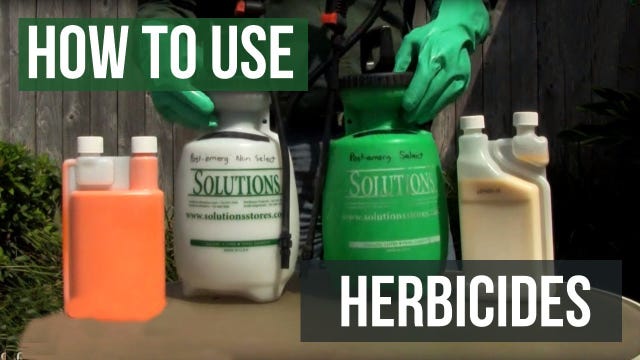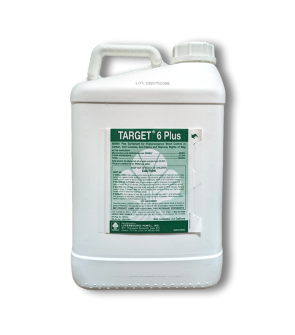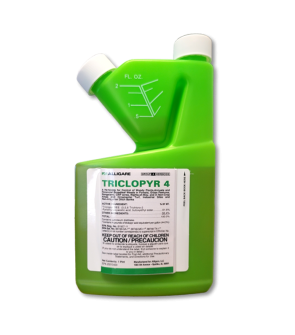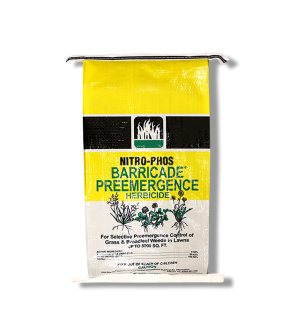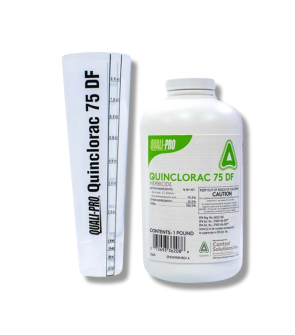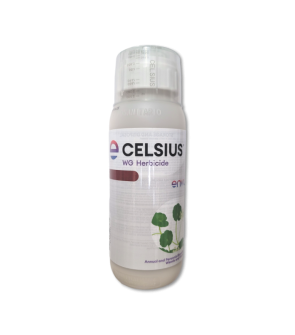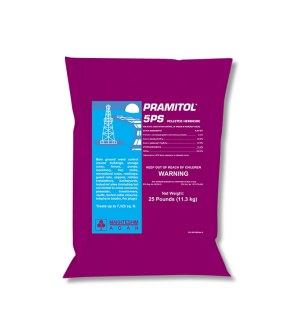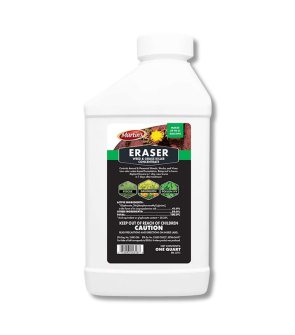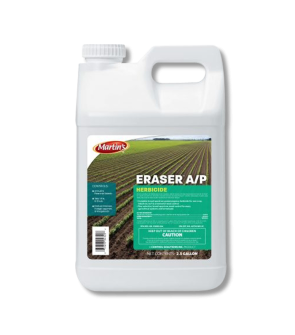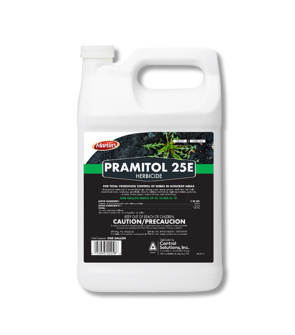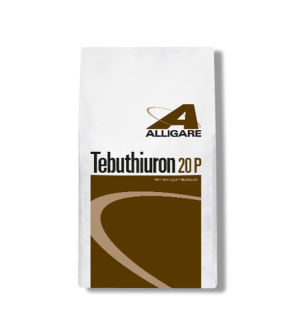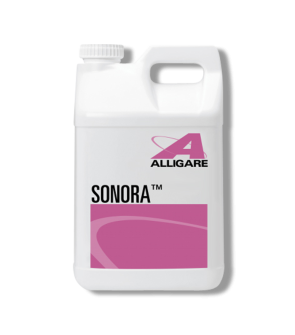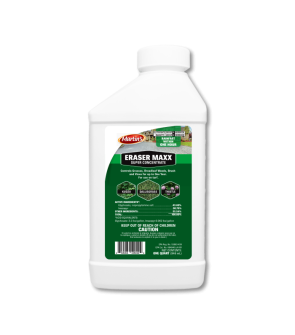Gain access to personalized product screening, the best pricing, rewards, and more!
Most Effective Products
Herbicide
Whether it is in your yard, a pond, on an industrial site, an agricultural farm or a commercial landscape, weeds can spring up and ruin the aesthetics, hinder recreation or even be a danger to people. For these reasons, herbicides were formed to address undesirable vegetation and eliminate them where they have been established.
On this page, we will cover the basics of Herbicides, how they work, their benefits and what to expect when applying them. Here you can also shop the top expert-recommended Herbicide products we have available.
What is a Herbicide?
Herbicides are chemical pesticides that are designed to kill an undesirable plant that may be growing in an area. The way that herbicides kill plants can vary depending on the active ingredient. Most herbicides are classified in two ways: they can either be selective or non-selective, and they can either be post-emergent or pre-emergent.
Selective herbicides are those that are designed to kill only a specific species of plant while causing no harm to desired vegetation. A non-selective herbicide is one where every plant that comes into contact with the chemical is killed. A good way to tell the difference is that selective herbicides are species-specific weed killers, and non-selective herbicides are non-specific weed killers.
Post-emergent herbicides are those that kill plants that have already sprouted out from seed and sprung up out of the ground. Pre-emergent herbicides target seeds before they begin to sprout and prevent the weed from germinating.
There is also a variant of non-selective herbicide known as a soil sterilant (or bare ground herbicide) that kills all plants where applied and prevents them from growing back for six months or more. This variation is useful on parking lots, rights-of-way, and industrial sites where no vegetation should grow.
Herbicides can come either in a liquid concentrate to be diluted in a sprayer or can come in granular form to be spread with a broadcast spreader. Some of the more popular Herbicide active ingredients include glyphosate, 2,4-D, Quinclorac, MSMA and many others.
How Do Herbicides Work?
Depending on the active ingredient of the herbicide and its mode of action, herbicides can harm and kill plants in different ways.
Some use hormones to interfere with the weed's growth processes (such as amino acid inhibitors and cell membrane disrupters), while others target the weeds' ability to perform photosynthesis.
Herbicides work either via contact, where the herbicide chemical only harms the parts of the plant where the product was sprayed. Other herbicides can work systemically where the product is absorbed into the plant by the plant tissue or roots and will translocate, or travel, throughout the entire body of the plant to destroy its growth process.
Benefits of Herbicides
Herbicides make it convenient and cost-effective to remove unwanted plants as opposed to using manual or mechanical methods of plant management like mowing, digging, and hand-pulling, which, more often than not, do not completely remove a plant.
Herbicides can also deliver continued protection from reoccurring weeds through pre-emergents, so you wouldn't have to keep breaking out post-emergent products to deal with weeds every growing season. The selective varieties of herbicide make it so you don't have to worry about harming your lawn or desired vegetation, as it will only kill the weed you want going.
Drawbacks of Herbicides
Herbicides can take some time to damage undesired weeds. While some can take a few days, other stubborn weeds can take a week or longer to die. Some may even require repeat applications, which can open up the plant to developing resistance to the herbicide chemical, making it ineffective.
Some herbicides can be very costly to purchase and apply on a regular basis. Herbicides are also very toxic and can cause harm to desired vegetation if not carefully applied.
Are Herbicides Safe?
Herbicides are safe to use when applied by carefully following the label instructions. Always make sure to wear proper safety equipment when handling and mixing herbicides, such as gloves, eye protection, and long-sleeved clothing to protect the skin. You should also always wear a protective safety mask.
Don’t apply Herbicides during times of high stress (high temperatures) or in conditions that might prevent plant growth. Windy days can be dangerous for application, as the chemicals can drift to desirable plants and in living areas where pets and children might be. Keep kids and pets away from treated areas for a few days to ensure safety.
Our Recommended Products
Eraser 41% Glyphosate - Eraser is a non-selective post-emergent herbicide that provides excellent control of unwanted grassy and broadleaf weeds. It contains 41% Glyphosate as its active ingredient and is great for spot treatments. It is easy to apply and works quickly to kill invasive plants.
Fahrenheit Herbicide - Fahrenheit Herbicide is a post-emergent water-soluble granule herbicide that controls broadleaf and grassy weeds in warm-seasoned turf.
2,4-D Amine Selective Post-Emergent Herbicide - 2,4-D Amine Selective Post-Emergent Herbicide is a post-emergent liquid herbicide that controls broadleaf weeds and brush in pastures, rangelands, cool-seasoned turf, and more.
Triclopyr 4EC Herbicide - Triclopyr 4EC Herbicide is a liquid post-emergent herbicide designed to control unwanted woody plants and perennial broadleaf weeds in forests, pastures, noncrop areas, and other agricultural areas.
Barricade Pre-Emergent Herbicide - Barricade Pre-Emergent Herbicide is a granular pre-emergent herbicide that prevents broadleaf and grassy weeds from growing in lawns, ornamental turf, and landscape ornamentals.
User Guide
The application method will vary depending on the herbicide being used and the treatment method.
For specific examples, we will demonstrate with the suggested products on this page.
Determine how much herbicide material to use by measuring the square footage of the treatment area. Find the square footage by measuring the treatment area's length and width in feet, then multiply them together (length X width = square footage). For acreage, take the square footage and divide it by one acre (square footage / 43,560 sq. ft. = acres).
How to Use Eraser 41 Glyphosate
Since this product is a non-selective herbicide, it will kill any vegetation it comes into contact with, including desired ones. For this reason, we suggest placing a cardboard box between the weed and desired foliage to avoid spray drift.
The best uses of non-selective herbicides include clearing paved areas of weeds in cracks and crevices.
Only a spot treatment with a handheld pump sprayer can be used.
To apply as a spot treatment, mix 2 1/2 oz. (5 tbs) of Eraser 41% Glyphosate with 1 gallon of water to cover 1,000 sq. ft.
Spray the top and bottom of weed leaves until wet, but not to the point of runoff.
Most treated weeds usually show initial symptoms in 2-4 days and complete kill in 1-2 weeks. Hard-to-control weeds may require a second application if not completely dead in 4 weeks.
How to Use Fahrenheit Herbicide
This product will need to be mixed with water in a handheld pump sprayer, backpack sprayer, or spray rig.
Apply this product as a spot treatment or broadcast spray.
For spot applications with a backpack or hand-held tank sprayer, add 0.2 oz. of Fahrenheit Herbicide per one gallon of water and apply uniformly over 1,000 square feet.
Larger broadcast applications may use 3 to 12 ounces of product per 20 gallons of solution to apply over 1 acre.
Avoid applications when temperatures are above 85 degrees Fahrenheit as this may cause injury to certain turf species.
Do not apply to turfgrass less than one year old.
Spray the top and bottom of weeds until wet, but not to the point of runoff. For broadcast treatments, simply spray over the treatment area until evenly covered.
Weed growth ceases within hours after application, resulting in control of weeds within 1-3 weeks after application, depending on the weed species and environmental conditions.
How to Use 2,4-D Amine Selective Post-Emergent Herbicide
Depending on the application site the type of treatment and rates will vary.
To treat cool-seasoned turf, you should only perform a spot treatment with a handheld pump sprayer.
Apply 1/4 pint of 2,4-D Amine Selective Post-Emergent Herbicide in 3 gallons of water and spray to thoroughly wet all foliage.
How to Use Triclopyr 4EC Herbicide
This product can be applied as a spot or broadcast treatment.
It will need to be mixed with water in a handheld pump sprayer, backpack sprayer, spray rig, or helicopter.
For a spot treatment in ornamental use, mix 3/8 to 3/4 fluid ounces of Triclopyr 4EC Herbicide per 1000 square feet in enough water to provide uniform coverage of the target area and apply at any time broadleaf weeds are susceptible.
Do not apply more than 2 quarts per acre or 1.5 fluid ounces per 1000 square feet of Alligare Triclopyr 4 in a single application.
How to Use Barricade Pre-Emergent Herbicide
To control weeds, it will need to be applied before they are present.
You will need a push spreader, broadcast spreader, or handheld spreader to evenly distribute the product over the treatment area.
Depending on your turf species, you may use anywhere from 1.5 to 4 pounds of Barricade per 1,000 sq. ft.
For landscape ornamentals, the application rate will be between 2.5 and 5.94 lbs. of product per 1,000 sq. feet.
Add your granules to the spreader and evenly apply the product over the treatment area.
Broadcast the Barricade uniformly using your spreader type. You may need to conduct 2 perpendicular passes to get uniform coverage. If granules land on your driveway, sidewalk, or street, sweep the product back onto your lawn.
Activate the granules by watering your lawn with at least 0.5 inches for best results.
Proper application will protect your lawn from new weed development throughout the season.
What To Expect
Timing is essential when applying herbicides for weed control. It is best to apply post-emergent herbicides when the plants are young and actively growing as opposed to when they are firmly established and mature.
For pre-emergent herbicides, you must apply before your target weed has appeared in early spring or fall. If a weed you are targeting is already growing, it is too late to apply pre-emergent, and it will be ineffective. You would need to use a post-emergent herbicide instead.
You should see signs of death from emerged plants that have been treated with herbicides within a few days via yellowing and wilting of leaves and complete death in 1 to 2 weeks. Repeat applications may be necessary for stubborn, persistent weeds. Follow the label directions carefully for schedules and advice specific to your weed problem.






